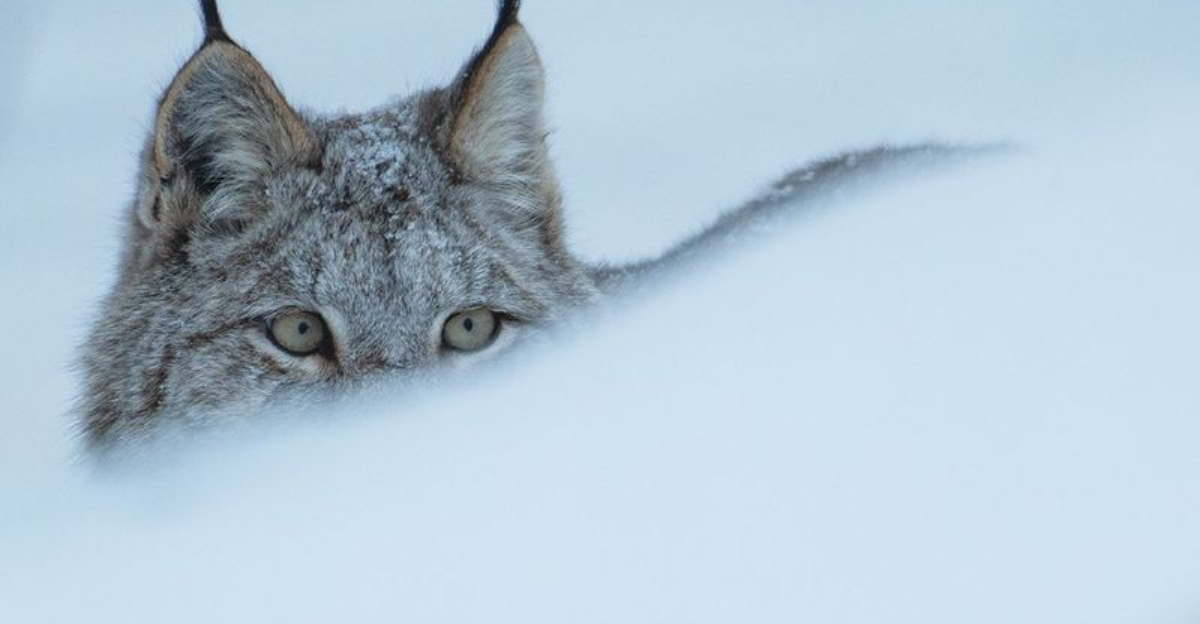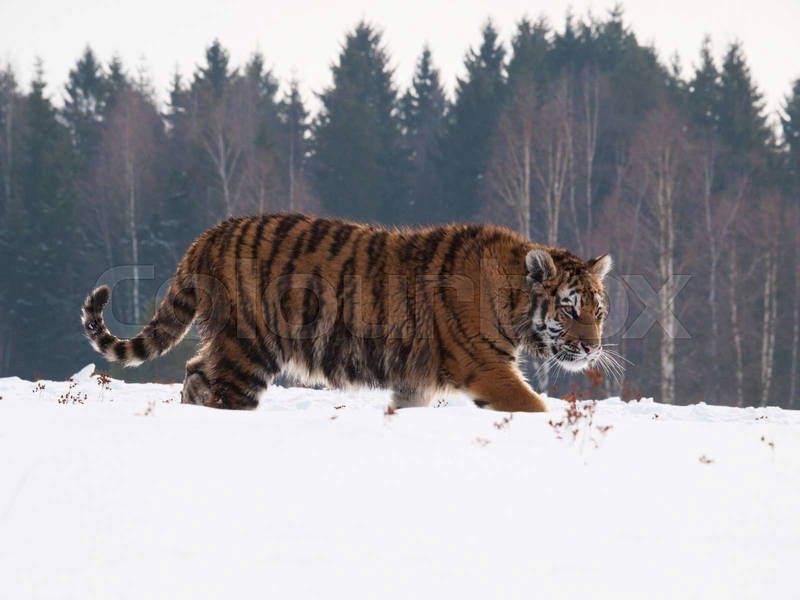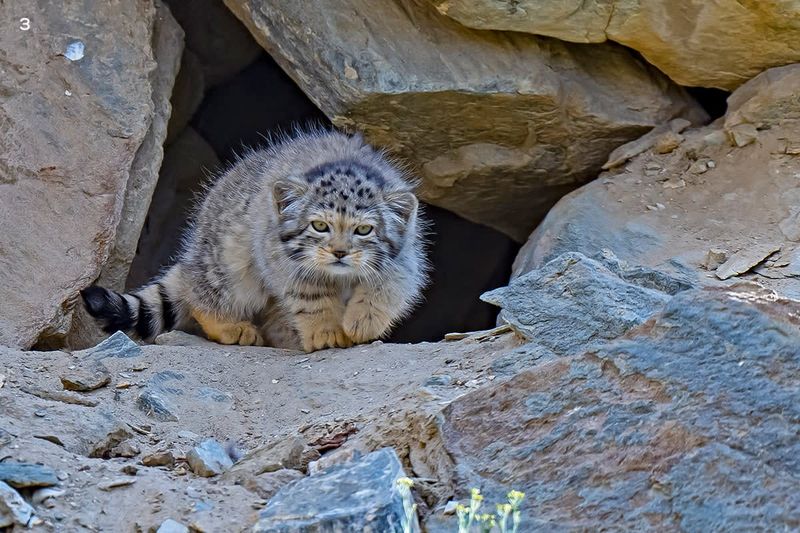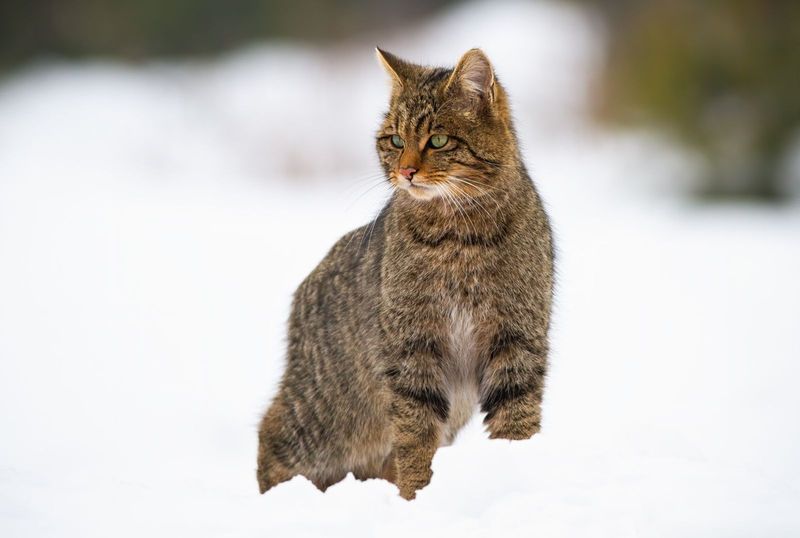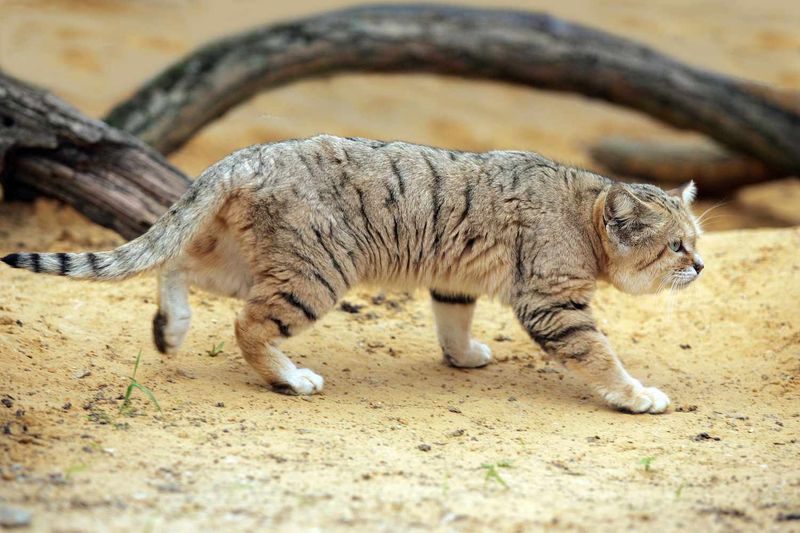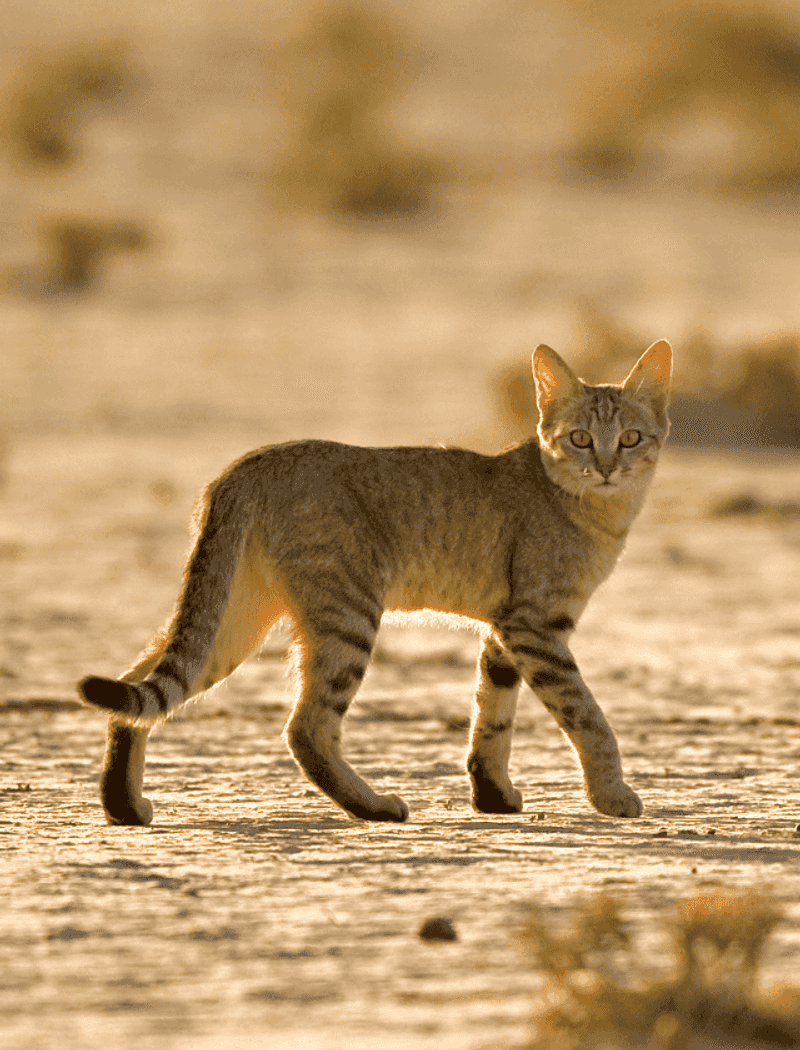📖 Table of Content:
Across the globe, wild cats have evolved extraordinary adaptations to survive in some of Earth’s most unforgiving terrains. From snow-covered mountain ranges to arid deserts that stretch endlessly under the sun, these feline predators showcase nature’s ingenuity and resilience. Their success lies not only in physical endurance but also in specialized traits that align with the environmental extremes they call home.
In snowy landscapes, survival hinges on insulation, camouflage, and agility in icy conditions. Some cats have developed oversized paws to tread lightly on deep snow, while others grow thick, layered coats that shield against brutal wind chill. High-altitude hunters like the snow leopard remain ghostly silhouettes against rocky cliffs, mastering cold terrain with stealth and strength.
Meanwhile, in the desert, entirely different challenges shape a cat’s survival strategy. These regions demand acute water retention, nocturnal lifestyles, and the ability to navigate scorching temperatures with grace. Desert-adapted felines are often smaller, swift, and solitary—perfectly attuned to the dunes and dry bushlands. The following eight wild cats, five built for snow and three born for the desert, exemplify the spectrum of evolutionary brilliance in the feline world.
1. Snow Leopard
Perched high among the rugged peaks of Central and South Asia, the snow leopard reigns as one of the most elusive big cats on Earth. Its thick, smoky-gray fur, patterned with rosettes, offers the perfect disguise against rocky outcrops dusted in snow. Evolved for elevation, this cat thrives at altitudes over 4,000 meters, where oxygen is thin and temperatures plunge. A long, bushy tail not only helps balance on jagged cliffs but also doubles as a scarf in freezing winds. Unlike other big cats, the snow leopard has relatively short limbs, adapted for leaping across vertical faces and narrow ledges. Its wide nasal passages warm the frigid air it breathes, and dense fur even covers its footpads to insulate against icy terrain. Moving with ghost-like silence, it survives in one of the harshest habitats on the planet with grace and power.
2. Lynx
Distinctive ear tufts and a ruff of fur around the face give the lynx a regal yet wild appearance. Found across boreal forests from Europe to North America, both the Eurasian and Canadian lynx are formidable hunters in deep snow. Their disproportionately large, fur-covered paws function like natural snowshoes, allowing them to glide across snowy terrain without sinking. As crepuscular hunters, they rely heavily on acute vision and hearing to detect small prey at dawn and dusk. In winter, their coats thicken dramatically, shifting to a paler shade that helps them blend into the snowy landscape. Solitary by nature, lynxes maintain vast territories, often marked by scent and claw marks on trees. Agile climbers and stealthy stalkers, they embody the balance between raw power and refined adaptation.
3. Siberian Tiger
Towering over its feline cousins, the Siberian tiger is the largest wild cat in existence. Native to the cold forests of the Russian Far East, it has adapted to survive brutal winters where temperatures can drop below -30°C. This subspecies has the thickest coat of any tiger, paired with a dense layer of fat to conserve body heat. Rather than dense jungle, it roams open coniferous forests and snowy valleys, using its lighter orange coat and paler stripes as camouflage. With powerful limbs, it can travel great distances through snow, tracking elk and wild boar as primary prey. These solitary giants need vast territories, often exceeding hundreds of square kilometers to find sufficient food. Despite its strength and size, the Siberian tiger moves with deliberate stealth, a ghostly monarch of the frozen wild.
4. Pallas’s Cat
Short, stout, and seemingly perpetually grumpy, Pallas’s cat is perfectly engineered for life in the cold steppes of Central Asia. Unlike other wild cats, it has a round, compact shape and a flattened face, minimizing heat loss and helping it stay hidden among rocky crevices. Its fur is the densest of any feline, even thicker than that of Arctic foxes, making it supremely warm and plush. Slow-moving by necessity, this cat avoids open terrain, preferring to hunt from ambush in sheltered areas where cover is abundant. Although it looks stocky and sluggish, it is a master of surprise, targeting pikas and small rodents with sudden bursts of speed. Being a solitary, low-profile predator, it is rarely seen in the wild, adding to its air of mystery. Pallas’s cat is an underrated marvel of high-altitude survival, clinging to life in sparse and inhospitable ecosystems.
5. Eurasian Wildcat
Hidden in the deciduous and coniferous forests of Europe and western Asia, the Eurasian wildcat is a stealthy, elusive survivor. It bears a strong resemblance to the domestic cat but is noticeably more robust, with a thick, bushy tail ringed in black. This cat’s winter coat grows longer and denser, forming a natural barrier against the chill of snow-covered undergrowth. As a ground-dwelling hunter, it relies on stealth and surprise, often freezing mid-step to avoid detection by prey. Its diet consists largely of small mammals like voles and mice, caught with precise, pouncing attacks. Though rarely spotted, it plays a critical ecological role by regulating rodent populations. The Eurasian wildcat represents a quiet but enduring lineage of feline survival in temperate snow-bound forests.
6. Sand Cat
Buried beneath the sands of North Africa and Central Asia lives the sand cat, a desert-adapted feline that might seem more myth than reality. Its pale, buff-colored coat perfectly blends with dunes and rocky terrain, helping it avoid predators and sneak up on prey. Unique among wild cats, it has fur covering the undersides of its feet, protecting it from scorching sand and leaving minimal tracks. This elusive hunter avoids the blistering heat by being nocturnal, emerging at dusk to hunt rodents, reptiles, and insects. Water is scarce in its environment, so the sand cat draws moisture directly from its food, eliminating the need to drink. It shelters in burrows during the day, either digging its own or taking over abandoned ones. Small but fierce, it’s a resilient desert phantom that’s rarely seen but superbly suited to survive.
7. Caracal
Sleek, strong, and striking, the caracal stands out in the desert with its athletic frame and dramatic black ear tufts. Native to African savannas and arid regions, it’s a master of dry-climate hunting, capable of leaping nearly 10 feet into the air to snatch birds mid-flight. Caracals conserve water efficiently, requiring little beyond what they obtain from prey, making them independent of open water sources. Their short, dense fur reflects sunlight and provides insulation, allowing them to move confidently under the desert sun. Opportunistic and solitary, they stalk and ambush small mammals, birds, and reptiles with impressive accuracy. Their large ears serve both for acute hearing and heat dissipation, an adaptation that aids survival in hot climates. Agile and elusive, caracals rule their domain with precision and poise.
8. African Wildcat
Camouflaged among dry grasses and desert rocks, the African wildcat is the elusive ancestor of our modern house cats. It thrives in arid savannas, semi-deserts, and even mountainous scrublands, where it quietly patrols its solitary territory. This cat’s muted grayish-brown coat with faint stripes helps it vanish into the dusty landscape, making it nearly invisible to both prey and predators. It hunts at night when the heat subsides, relying on stealth and sharp senses to capture rodents and small birds. Like many desert dwellers, it gains moisture from its prey, rarely drinking from exposed water sources. Highly adaptable, it can survive near human settlements yet rarely intermingles, keeping to its wild nature. The African wildcat is a quiet testament to evolution, bridging the wilderness and domestic familiarity in a single agile body.
